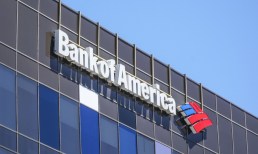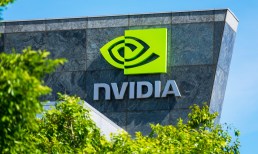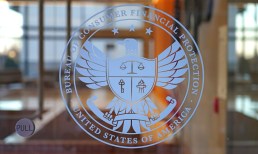Most weeks, the tale of Amazon and Walmart’s ongoing battle for the larger share of the consumer’s whole paycheck is a fairly evenly run race. Stumbles happen here and there, and pull-aheads are not unheard of – but mostly, the race is made up of moves and countermoves as each struggles to get or stay ahead.
But every once in a while, one side comes out notably ahead – and this week was one of those weeks, with Amazon’s Prime Day performance more or less blowing Walmart out of the water.
Now, in fairness, if there was ever a day when Amazon would run the retail table, it would likely be on the shopping holiday they invented. And Walmart wasn’t alone in its view of Amazon’s taillights on Prime Day – while many tried through various means on Monday and Tuesday to compete with the house that Bezos built, it was pretty much Amazon’s show. Everyone else – including Taylor Swift – was just a player in it.
But as big as Prime Day was across all of retail, it wasn’t the only thing happening in the ongoing race. There was plenty to watch this week, as 2019 enters its back half and starts to really pick up speed.
Amazon
Biggest Play of the Week: The Prime Day Bounce
Advertisement: Scroll to Continue
By any rational measure, Amazon had a big day on Prime Day. According to internal numbers from Amazon, this year’s Prime Day was its biggest shopping day ever – in fact, it was bigger than any previous Black Friday and Cyber Monday combined.
The sale went for two days (making the Prime Day moniker something of a misnomer) in 18 nations, and was the biggest-ever sale day for Amazon’s entire lineup of devices, with the Echo Dot and the Fire TV Stick leading the pack among sellers.
Beyond the sales, though, Amazon also reported a record day for signing on new members to its $119-a-year Prime service. Amazon reports that July 15 set a record for individual day sign-ons, and that July 16 (Prime Day part two) saw an almost equal number of signups. How many new users does that translate to, other than a lot? There’s no way to know for sure, as Amazon did not release specific figures.
“We want to thank Prime members all around the world,” said Amazon CEO Jeff Bezos. “Members purchased millions of Alexa-enabled devices, received tens of millions of dollars in savings by shopping from Whole Foods Market and bought more than $2 billion of products from independent small and medium-sized businesses. Huge thank you to Amazonians everywhere who made this day possible for customers.”
In specific numbers, Amazon did give some item counts: 200,000 televisions, 300,000 headphones, 100,000 laptops and over one million toys went out the door on Prime Day. The fastest-selling items in the U.S. were the LifeStraw Personal Water Filter, the Instant Pot DUO60 and 23andMe Health + Ancestry kits.
But perhaps the biggest win for Amazon on Prime Day wasn’t what they sold, but how much more they sold than everyone else. According to data from eCommerce research company Edison Trends, shoppers spent more than 10 times as much money at Amazon during the first 24 hours of Prime Day than they did on Walmart and eBay combined.
And while Amazon has not offered an official tally, Coresight Research estimates that its Prime Day sales total came in at around $5.8 billion.
As well as the day went for Amazon, there were some undeniable, and in some cases amusing, glitches. Some members of the Slickdeals forum managed to score an accidentally amazing deal on some very expensive photography gear for a very low price. The pricing anomaly was first found when a forum member posted an offer for a Sony a6000 mirrorless camera bundled with a 16-50 millimeter lens – a kit that generally costs about $550 – that was priced at $94.48.
It sold out quickly.
But sharp-eyed members noticed a glitch: The site had marked down almost all of the Prime Day-tagged camera equipment to around $94. One user reported buying a $13,000 lens for $94, and another claimed to have purchased $64,000 worth of camera equipment for $500.
At some point, Amazon discovered the glitch and canceled some of the too-good-to-be true deals, according to Gizmodo – but not all of them.
“Can’t believe Amazon actually delivered! Now the question is, what’s the best route to get these sold?” Slickdeals forum member “SoccerMomDeals” posted.
Courting the Cool Kids: Luring Exclusive Brands With a Dedicated Accelerator
As part of its ongoing efforts to expand its line of exclusive brands, Amazon has launched a new accelerator program to offer independent merchants and manufacturers a reason to create exclusive goods in return for prominent placement on Amazon’s platform, marketing support and product reviews, and access to an expanded set of tools to push those products forward.
The Amazon Brand Accelerator Program is invite-only; for this first run, Amazon is looking to bring on about 10 brands in 2019, targeting soon-to-launch and already launched brands – preferably, those with sustainability or a mission-for-good bent.
To qualify, according to Digiday, brands must be able to do at least $1 million in sales in their first month on Amazon, maintain a healthy inventory level and have expertise in digital marketing and brand-building. They must also commit to funneling a minimum of 5 percent of all revenue earned on Amazon into Amazon’s Paid Ads program.
Moreover, according to reports in The Wall Street Journal, the program gives Amazon the right to purchase a merchant’s brand at any time for a fixed price (which is often $10,000, according to the report) with 60 days’ notice.
But the rewards for clearing that high bar are pretty evident: a lot more exposure and sales on Amazon.
“Amazon’s private-label products account for approximately 1 percent of our total retail sales,” an Amazon representative told The Journal. “This is far less than other retailers, many of whom have private-label products that represent 25 percent or more of their sales.”
Apart from receiving prominent display on the site, Amazon Accelerator members also won’t get charged for reviews through Amazon’s Vine Reviews program (Vine reviews generally cost about $25 apiece). They will also get a host of social media and email marketing tools, access to a Seattle-based coworking space and participation with other brands in special projects such as co-branded pop-up retail stores, AMZ Advisers said in a May article.
“Amazon Accelerator creates new opportunities for manufacturers and offers a way for them to launch brands and products directly to Amazon customers,” an Amazon spokesperson said in an emailed statement. “For customers, this program adds products to our assortment and allows us to offer an even wider selection of high-quality products at a great value.”
And Amazon wasn’t the only player looking to up the level of its game. In fact, that was more or less the central theme for Walmart this week.
Walmart
Big Move of the Week: Real-Time Security Ranking
Perhaps unsurprisingly, Walmart is a beloved target for cybercriminals. What might be surprising, however, is just how beloved. According to Walmart, the brand experienced over six trillion cyber events in 2018 alone.
Of those, Walmart’s Director of Global Cybersecurity DeWayne Hixson told ZDNet, almost 14 million were actual attacks. They also beat back about two billion pieces of spam email.
“You can just imagine how many of those were phishing attack attempts,” he said.
All in, 230 million malware alerts were received, 1.4 billion lines of code were reviewed, over 2.5 million user accounts were managed, more than 450,000 end points were protected and over 5.1 million vulnerabilities were remediated.
“It is a lot to manage and measure,” Hixson noted.
And so Walmart is now trying to help its executives get a better look at their internal security landscape, and to make it accessible at a quick glance.
So Hixson essentially built a dashboard of all relevant information to provide executives with a quick look at Walmart’s massive global footprint. But the dashboard also ranks how that individual is protecting their own data security, as measured against their peers. Ultimately, they get a grade of A, B, C, D or F, along with action items to improve.
The desire to stay at the top of the pack, Hixson noted, gives executives further incentive to engage with the firm’s security strategies.
“For the most part, executives have pretty short attention spans, and if I don’t have something in front of them that they can look at and within 30 seconds understand ‘I need to do this one thing,’ they’re moving on to the next thing – they’re just too busy.”
Playing Catch-Up: Getting up to Digital Speed
The fact that Amazon won Prime Day is almost inevitably the conclusion when one looks at the sales data available – but Walmart didn’t take the defeat lying down.
Instead, they chose to double down. Amazon’s Prime Day went for two days – so Walmart’s savings period was extended for four days. Walmart started celebrating its version of Prime Day 24 hours earlier than Amazon did, and shut the doors on its savings party a full 24 hours later.
And Walmart kept its most attractive deals – on big-screen TVs, Apple Watches and video game consoles – up and active to the very end, which kept commerce-minded consumers coming to the site.
Prime Week also saw Walmart CEO Doug McMillon admitting at Fortune’s Brainstorm Tech conference that Walmart has had to make major adjustments to keep up in eCommerce – and, more specifically, to keep up with Amazon after first falling behind.
“Obviously, brick-and-mortar stores are one thing. eCommerce, in some ways, started out feeling like an independent channel or an independent business,” McMillon said. “Yeah, we fell behind and have been playing catch-up, and have been doing a number of things to accelerate that progress, and learning along the way and getting better, as it relates to the customer experience.”
McMillon noted that for Walmart, catching up has meant not only beefing up its online offerings, but also understanding that the retail market is still evolving, and consumer preferences are trending toward omnichannel experiences.
“So today, we’re very focused on creating a seamless experience for the Walmart brand, bringing the stores and eCommerce together,” he said. “Stores have some advantages, and we’re trying to make the most of those. And then catch up in eCommerce and get better with the customer experience and put them together in a way that’s unique and customers will find not only saves them money and time, but creates the optimal experience.”
Creating an optimal experience is, of course, what every retailer is trying to do as 2019 is starting its second half, Amazon included.
Who will do it better, and ultimately end up winning the majority share of the consumer’s whole paycheck?
That remains up in the air – though Amazon did manage to get a few lengths ahead this week.




